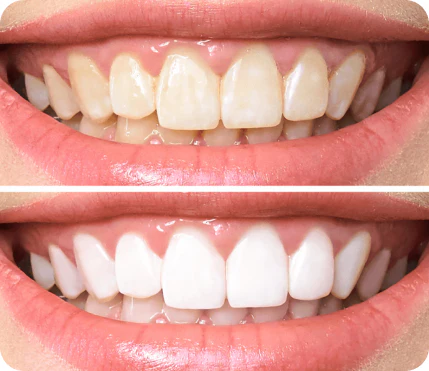A bright, white smile is often considered a symbol of health, youth, and confidence. Many people turn to over-the-counter whitening strips to achieve that glow, but these products aren’t ideal for everyone. Some people experience tooth sensitivity, while others prefer natural alternatives or want to avoid chemical-based treatments. If you’re wondering how to whiten teeth without strips, you’re in luck. Several effective, safe, and affordable alternatives can help you achieve a radiant smile right at home without compromising your dental health.
Use Baking Soda to Brush Away Stains
Baking soda is one of the most popular natural remedies for teeth whitening. Its mildly abrasive texture helps scrub away surface stains on teeth, while its alkaline properties create an environment that discourages bacterial growth in the mouth. To use it effectively, simply mix a teaspoon of baking soda with a few drops of water to form a paste. Brush your teeth with this mixture for about two minutes and rinse thoroughly. You can use this method two to three times a week, but be careful not to overdo it. Excessive use may wear down your enamel, leading to sensitivity.
Try Oil Pulling with Coconut Oil
Oil pulling is an ancient Ayurvedic technique that involves swishing oil around your mouth to remove toxins, bacteria, and plaque. Coconut oil is particularly effective for this practice due to its natural antimicrobial properties. Take about a tablespoon of virgin coconut oil and swish it in your mouth for 15 to 20 minutes. Spit it out in the trash (not the sink to avoid clogs), rinse your mouth with water, and brush your teeth afterward. While it might not deliver instant whitening, oil pulling used consistently over time can help reduce yellowing caused by plaque and bacteria.
Use Hydrogen Peroxide with Care
Hydrogen peroxide is commonly used in teeth whitening products and offers mild bleaching effects. If you’re looking for an at-home solution, you can try using a diluted version. Mix equal parts of 3% hydrogen peroxide and water, swish it in your mouth for 30 to 60 seconds, then spit it out and rinse. This can be done two to three times a week. However, caution is necessary do not swallow the solution, and consult a dentist if you notice sensitivity or gum irritation.
Consider Activated Charcoal
Activated charcoal has gained popularity in recent years as a natural teeth-whitening agent. It works by absorbing impurities and surface stains. To use it, dip a damp toothbrush into activated charcoal powder and gently brush your teeth for about two minutes. Rinse thoroughly afterward to remove all black residue. Like baking soda, charcoal should be used sparingly, no more than once or twice a week, to avoid enamel erosion.
Eat Crunchy Fruits and Vegetables
Some of the foods you eat can help naturally clean and whiten your teeth. Crunchy fruits and vegetables such as apples, carrots, and celery act like natural toothbrushes as you chew. Their rough texture helps scrape away plaque and stains, while also stimulating saliva production, which neutralizes harmful acids in your mouth. These foods are also rich in nutrients that support healthy gums and teeth. Incorporating them into your daily diet not only improves oral health but also contributes to a whiter smile over time.
Avoid Foods and Drinks That Stain
One of the easiest ways to maintain white teeth is to prevent staining in the first place. Beverages like coffee, tea, red wine, and cola can stain the enamel over time, while foods like berries, tomato sauce, and soy sauce are also known for their staining potential. If you consume these often, try using a straw to limit contact with your teeth, rinse your mouth with water afterward, and wait about 30 minutes before brushing to avoid damaging softened enamel. Moderation and proper care can help prevent discoloration from setting in.
Use Whitening Toothpaste with Natural Ingredients
Many natural whitening toothpastes are available that can help brighten your smile without the need for harsh chemicals or bleaching agents. Look for options that contain baking soda, clay, or papaya enzymes. These pastes can gently remove surface stains while also protecting your enamel. Ensure the toothpaste has fluoride to maintain strong teeth and check for the ADA (American Dental Association) seal of approval to ensure its safety and effectiveness.
Maintain a Strong Oral Hygiene Routine
Whitening your teeth is only part of the equation. Maintaining that brightness depends heavily on a consistent oral hygiene routine. Brush your teeth at least twice a day with a soft-bristle toothbrush, floss daily to remove debris between teeth, and use an antibacterial mouthwash to reduce plaque. Additionally, regular dental check-ups and cleanings (every six months) are essential. Professional cleanings remove tartar and deep-seated stains that home remedies cannot reach, leaving your teeth looking and feeling cleaner and brighter.
Apple Cider Vinegar: Use with Caution
Apple cider vinegar has natural bleaching properties and can help whiten teeth if used carefully. However, it is acidic and can weaken tooth enamel if overused. To try this method safely, dilute one part apple cider vinegar with two parts water, swish it in your mouth for no more than 30 seconds, then rinse thoroughly and brush your teeth. Use this remedy only once a week to minimize potential damage.
Professional Cleaning and Natural Whitening Advice
Even if you prefer to avoid whitening strips, regular visits to your dentist remain crucial. A professional cleaning can remove stains and tartar buildup more effectively than brushing alone. Additionally, your dentist can recommend safer, non-strip alternatives that are suitable for your specific dental needs, especially if you have sensitive teeth or dental restorations like crowns or veneers.
Consult Dr. Ameer Hamza for Professional Teeth Whitening via Instacare
Final Thoughts
You don’t need to rely on commercial whitening strips to get a brighter, more confident smile. With the right combination of natural remedies, proper oral hygiene, and smart dietary habits, you can safely whiten your teeth at home. While these methods may take longer than strips to show results, they offer a gentle and sustainable approach to improving your smile all without exposing your teeth to unnecessary chemicals. Remember, consistency is key, and a healthy mouth is the foundation of a beautiful one.


